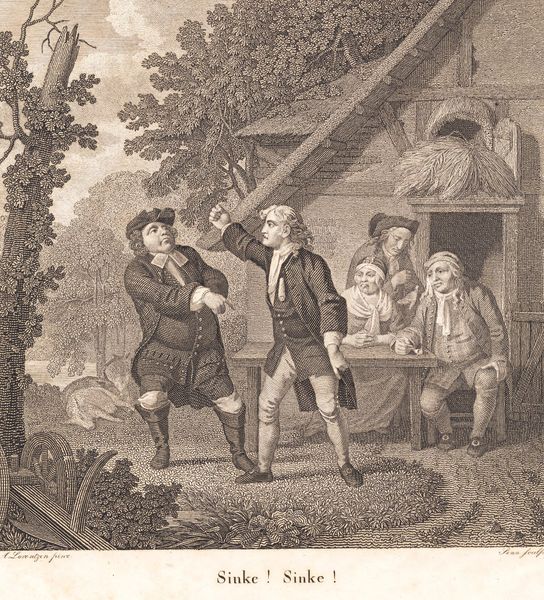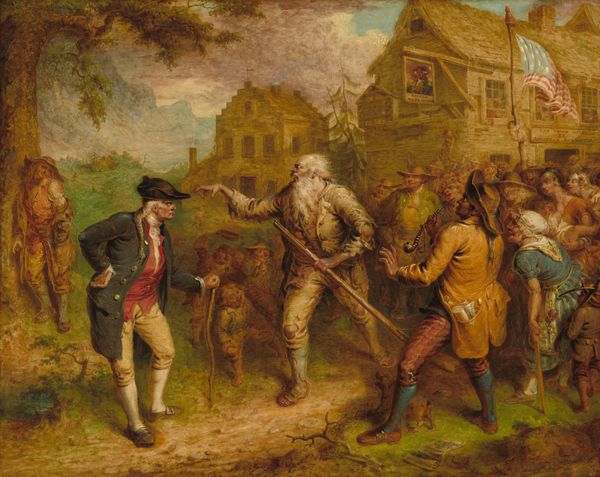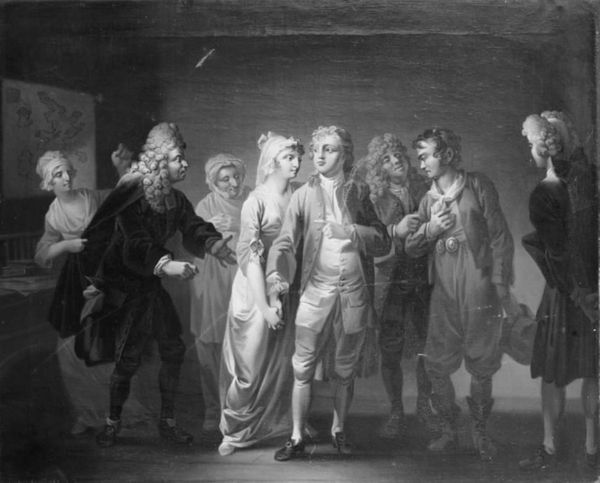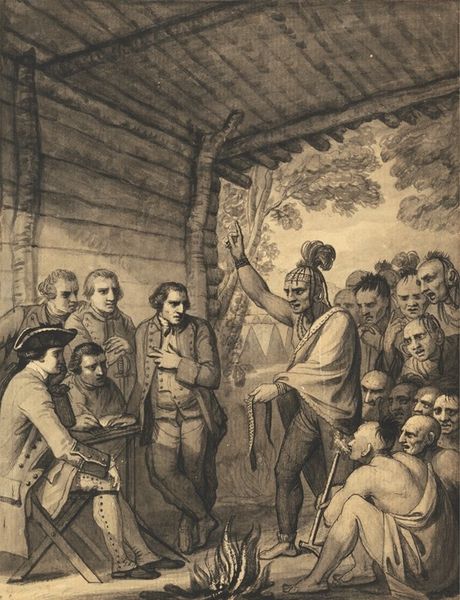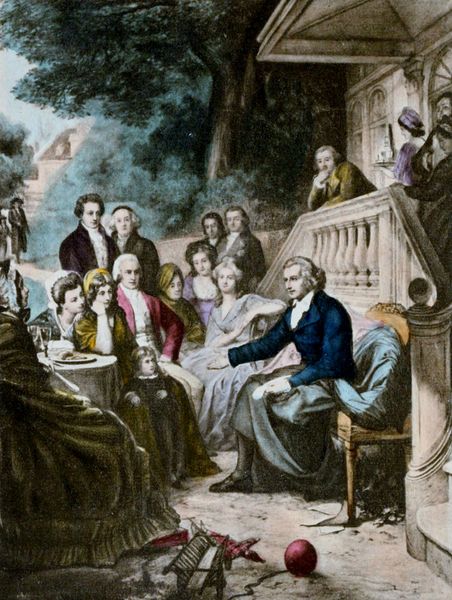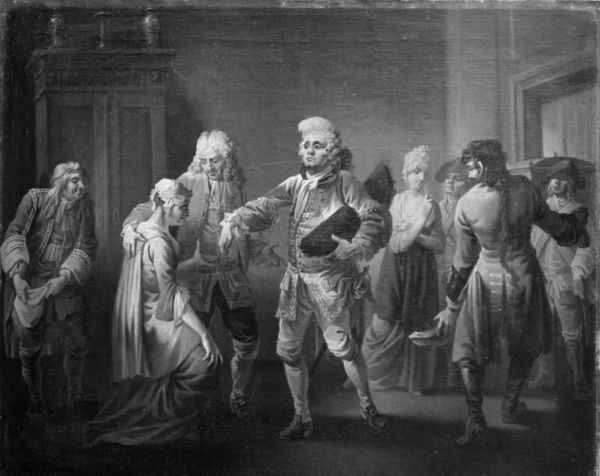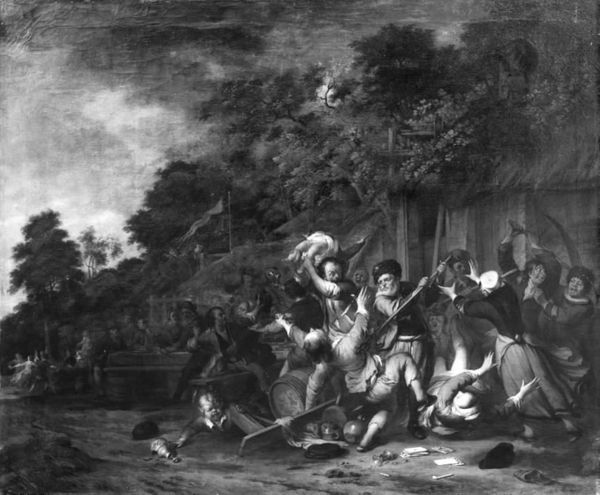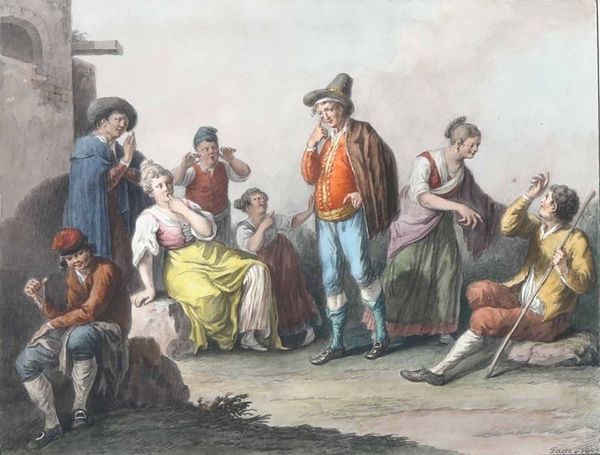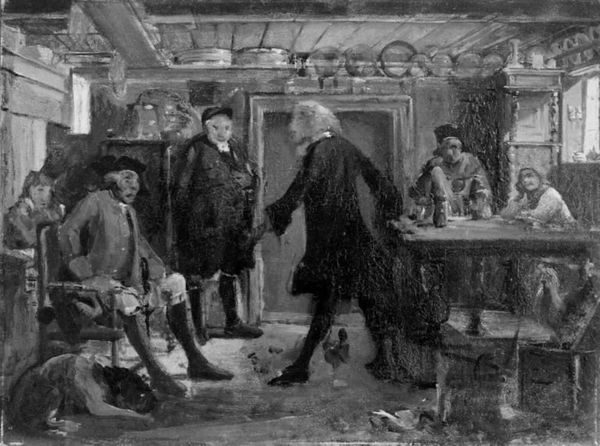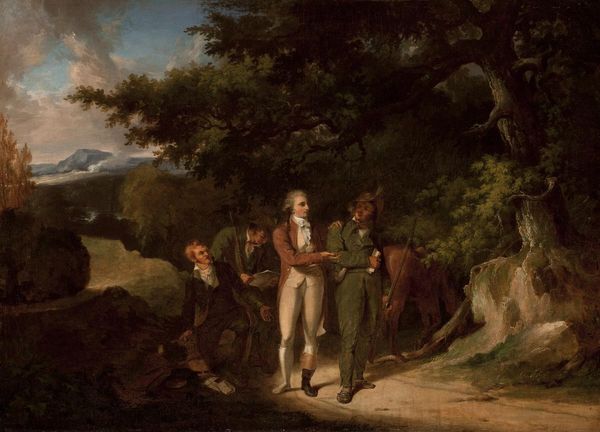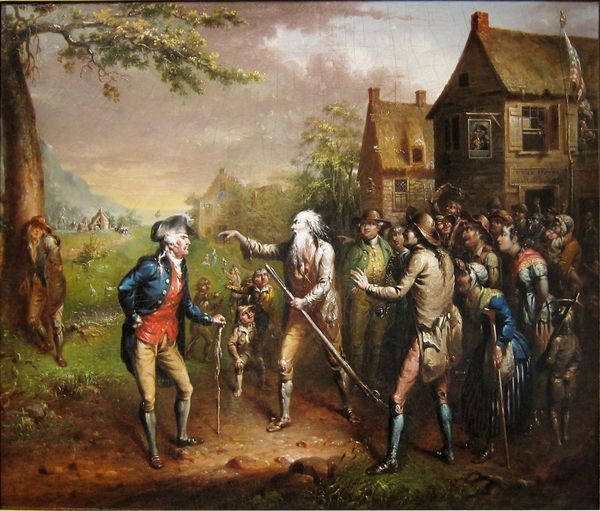
drawing, print, engraving
#
portrait
#
drawing
# print
#
charcoal drawing
#
genre-painting
#
history-painting
#
charcoal
#
engraving
Dimensions: 56.5 cm (height) x 71 cm (width) (Netto)
Editor: This is C.A. Lorentzen's "Erasmus Montanus, III akt, 3. scene," made sometime between 1761 and 1828. It seems to be a drawing, possibly a print or engraving. The scene feels very theatrical; almost like a stage frozen in time. What can you tell me about it? Curator: Well, let's consider the social context of history painting. Works like this gained prominence through institutions such as salons and academies. They often depicted pivotal scenes from history or literature to convey moral lessons and reinforce societal values. How do you see that playing out here? Editor: The dramatic gestures of the two figures at the front do seem like they’re acting out some sort of conflict. The older people at the table in the background seem less invested, as if they’ve seen this all before. Curator: Exactly! And look how Lorentzen stages it all – it resembles a theatrical production, right? It is "genre-painting," derived from the history painting tradition. The setting, with the rudimentary architecture and costuming, gives it a "folk" or "everyday life" flavor that catered to the bourgeoning middle-class art consumer. The power of images resides not just in what is shown, but also in who is able to see it. What kind of "public" do you think this image constructs? Editor: That's interesting. I suppose the artist and institutions were probably trying to both entertain and elevate this audience with these scenes of moral instruction. But also the rise of print culture made art more accessible? Curator: Precisely! It invites debate. Mass production of artworks changes the reception and circulation of imagery within society, wouldn’t you say? Editor: Absolutely, it does make you wonder about the role of art in shaping public opinion back then and even today. Thanks for clarifying its position within the public sphere and art history! Curator: It's fascinating to see how art functions in different eras and how social structures dictate their value. There’s so much more than what initially meets the eye.
Comments
No comments
Be the first to comment and join the conversation on the ultimate creative platform.
